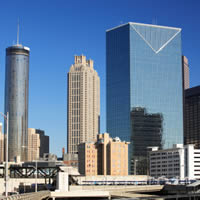Scaffolding
USAChina Scaffolding
Scaffold Industry News
 With bamboo scaffolding, Hong Kong and other Asian countries may be ahead of the curve in terms of sustainability. Countries like China have been using bamboo scaffolds for hundreds of years, erecting elaborate and massive systems around buildings and structures of all sizes. Unlike their steel, metal and wood counterparts, bamboo scaffolding is highly renewable and highly developed, lessening its adverse impact on the earth and natural resources.
With bamboo scaffolding, Hong Kong and other Asian countries may be ahead of the curve in terms of sustainability. Countries like China have been using bamboo scaffolds for hundreds of years, erecting elaborate and massive systems around buildings and structures of all sizes. Unlike their steel, metal and wood counterparts, bamboo scaffolding is highly renewable and highly developed, lessening its adverse impact on the earth and natural resources.
Why is bamboo scaffolding so readily used in countries like China and all around Asia? Although bamboo may appear to be weak or pliable, when treated, the plant transforms into a very hard, strong wood. By wetting and drying the bamboo, the treatment creates a durable, strengthened wood that is perfectly suitable for holding the weight of people and building supplies. Treated bamboo is not only sturdy and rigid, but also incredibly lightweight. This quality allows bamboo scaffolds to be easily portable, yet strong enough for use as a steel or metal substitute.
The strength of bamboo scaffolding is amazing, as the structures are earthquake and cyclone resistant. Considering the importance of safety when erecting and working from scaffolding, bamboo scaffolds offer a secure working platform matched with an eco-friendly alternative to typical building materials. There are more than 1,500 species of the bamboo plant, and it is one of the fastest growing plants on earth. Instead of using wasteful materials such as steel and depleting our natural forests by cutting down astronomical amounts of wood, bamboo offers a welcomed, sustainable alternative.
Though bamboo scaffolding has been prevalent in China and other Asian countries on skyscrapers, statues, commercial buildings, offices and the like, it is now gaining more recognition as viable construction system in other parts of the world, too. Many construction companies, contractors and developers are turning to bamboo as an ecological construction material. For slow adopters, some are incorporating bamboo with typical building materials such as steel, metals and wood to reinforce the strength of the scaffolding system.
Aside from reducing an ecological footprint on the earth, bamboo scaffolding is actually quite breathtaking to look at. When walking around cities in China like Shanghai and Hong Kong and seeing the immense, intricate bamboo scaffolds, it is hard to be amazed that a natural resource so renewable and sustainable can be erected to support workers and materials while reconstructing a building. As the world moves towards "greener" pastures, we can expect to see more sustainable bamboo scaffolding - maybe even in our own home cities.